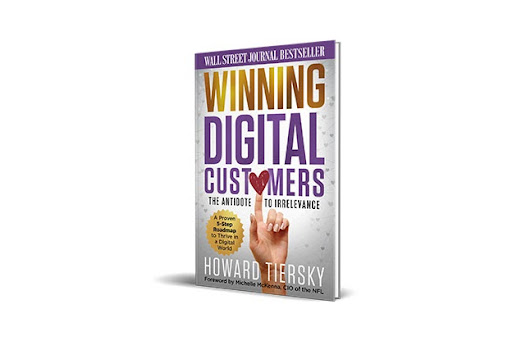Insights | By Howard Tiersky
7 P’s to Help You Communicate What Your Brand Stands For
The most successful brands today don’t just deliver a great product; they also resonate with their customers around something they “stand for.” Most consumers could do a reasonably good job of describing what brands like Nike, Chick-Fil-A , Wholefoods, Disney, and Apple stand for, and studies show that has a big impact on customer loyalty.
What are they doing to successfully make their values resonate with their customers? Perhaps your company also has core values that it stands for, whether it’s innovation, customer service, caring for those less fortunate, or up-ending the status quo. But if your customers aren’t feeling those values through their interactions with the brand, you won’t get the kind of impact that Harley Davidson or Godiva does.
For reasons I will describe in this article, it’s definitely not enough to just tell customers what you stand for. Instead, use a combination of the 7 P’s described below and you will be modeling what the leading companies are doing.

POSITIONING
Positioning is about telling your customers what you stand for.
For example, Wholefoods stands for quality food. They communicate that through their messaging, which includes statements like “the highest standards weren’t available, so we created them,” and their tagline, which is “America’s healthiest grocery store.”
While it’s great to have good positioning, it’s not sufficiently powerful on its own because people today are more cynical about what brands say about themselves. However, when used in conjunction with the other P’s, it can call people’s attention to and remind them about what you stand for.
I suggest you think about positioning less as a tool to persuade customers and more as a way to stake a claim to a set of values. Expect customers to be skeptical of this claim if all they experience is your positioning, but that skepticism will also make them more attentive to the presence of values when you express them using the other P’s.

PRODUCT
Product is all about the experience that you give your customer.
If you go to Disneyland, you’d get a sense of what they’re all about—wholesome family entertainment—without them telling you. Their stand is being demonstrated through your interaction with them.
When the experience you give your customers aligns with what you stand for, it can enhance the effectiveness of your positioning or the other P’s we’re going to talk about.

PASSION
Passion is about having a figurehead who personalizes and creates excitement for your brand.
Think about how Steve Jobs or Elon Musk represent their companies and communicate why their brand and products exist. This humanizes the brand and helps create a connection with their customers.
People know that brands are just abstractions and therefore can’t “feel” anything, but having a person that exudes passion for what you stand for and exhibits a strong desire to create the product experience adds a massive amount of credibility.

PEOPLE
In the Passion section, we talked about having a figurehead, which is one person who represents your brand. But it’s not just the leader who influences how your customers perceive your brand—so does everyone who represents your brand, including sales associates, delivery personnel, security guards, call center agents, etc.
UPS is a perfect example of this. People get to know the driver who goes to their house over the course of months, years, or decades and they form a relationship with them. Some go as far as remembering when their customer’s birthdays are, getting to know their family, playing with their dog, etc. It’s these stories of service and care that people tell about the UPS employees that helped shape their view of the UPS brand.
This does not usually happen by accident, but via a strategic approach to hiring, training, and measuring employees so that they are living the company’s values in their daily interactions with customers.

POLICIES
Policies refer to how you conduct business.
For example, for many companies, accepting a return is a necessary evil and not something that they want to make easy. They could have ten checkout lanes, but only have one lane for returns because it isn’t necessarily in their best interest to help you return something.
Amazon, however, goes to great lengths to make their return policies easy and convenient. From sending you postage-paid mailing labels at the click of a button to even working with Kohls so that you can bring in Amazon returns physically if you prefer, no box necessary, Amazon takes the return process to the next level.
When you develop policies that are aligned with what your company stands for, it not only adds credibility, but also demonstrates commitment.

PROBLEMS
How your employees deal with customer problems is an opportunity for you to go above and beyond what your customer expects. Dealing with problems often transcends formal policies or might even involve departing from standard policy when a given situation warrants.
Ritz-Carlton employees are empowered to solve any problem that their guests might have, even if it costs up to $2,000. Their stance on delivering the best possible experience for their guests is more important than any potential loss they might suffer.
Being able to handle unusual situations in a way that demonstrates your brand’s values and what you stand for, especially when it goes beyond company policy, can help cement your customer’s loyalty to your brand.

PHILANTHROPY
Finally, Philanthropy is about demonstrating what you stand for through charitable acts or giving.
TOMS shoes’ one-to-one strategy of giving a pair of shoes to a child from a developing country for every shoe that is purchased is a great example of this. Now, TOMS has taken that a step further by giving ⅓ of their annual net profits to local community-focused organizations.
Making a substantial contribution to a cause that you and your customers believe in can create a huge impact on how your brand resonates with them and associate any interaction with you as a way for them to impact society.
While you don’t necessarily have to do all seven in order to be good at expressing what you stand for, being able to incorporate four or five of these will put you in a good spot to win your customer’s love and loyalty. You can also look at how your favorite brands won your love by incorporating a combination of these 7 P’s and how you can do the same.












